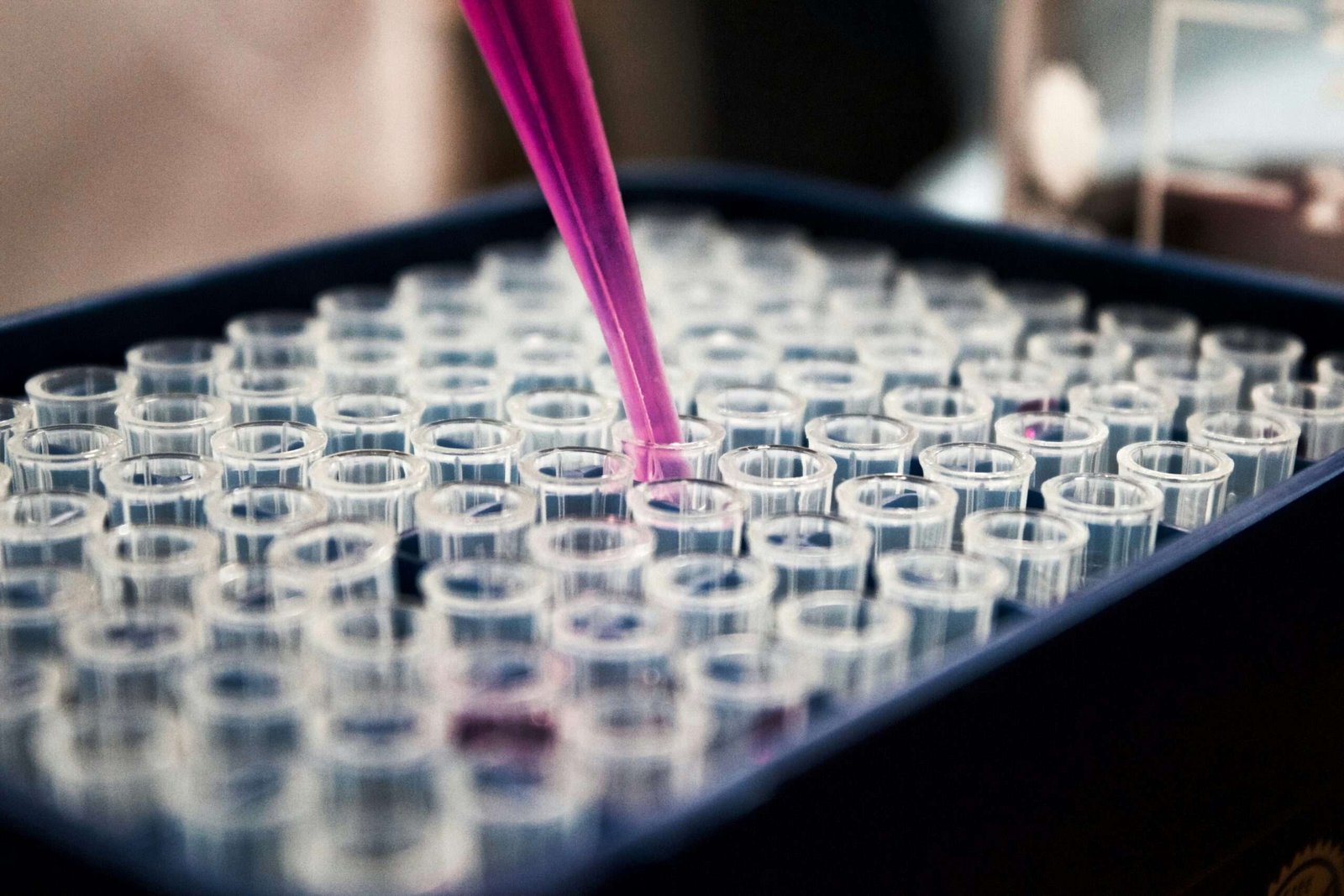
The Impact of GLP-1 on Brain Function: Enhancing Learning, Memory, and More
Understanding GLP-1: A Brief Overview
Glucagon-Like Peptide-1 (GLP-1) is an incretin hormone produced by the intestinal lining in response to nutrient intake. It plays a crucial role in glucose homeostasis, primarily through its capacity to enhance insulin secretion and inhibit glucagon release, thus facilitating glucose-dependent regulation of blood sugar levels. Beyond its established metabolic functions, research has illuminated GLP-1’s emerging role within the central nervous system (CNS), where it exhibits significant implications for cognitive functions such as learning and memory.
GLP-1 is primarily synthesized in the L-cells of the intestine and released following the ingestion of food. Once released, it acts on various organs, including the pancreas and the brain. In the context of appetite regulation, GLP-1 has been shown to induce satiety and diminish food intake, presenting potential avenues for therapeutic interventions in obesity and related metabolic disorders.
In the brain, GLP-1 receptors are distributed throughout numerous regions, particularly those associated with higher cognitive functions. Notably, the hippocampus—a critical area for learning and memory consolidation—expresses a significant concentration of GLP-1 receptors. This receptor distribution suggests a direct influence of GLP-1 on cognitive processes, indicating that it may contribute to both neuroprotection and cognitive enhancement.
Recent studies have further explored the nuanced effects of GLP-1 on neuronal activity, synaptic plasticity, and neurogenesis, underpinning its potential in enhancing learning and memory. By modulating signaling pathways associated with these cognitive functions, GLP-1 has garnered attention for its potential therapeutic applications in neurodegenerative diseases and cognitive impairments, marking a pivotal shift in our understanding of the hormone’s systemic roles beyond the metabolic realm.
GLP-1’s Role in Enhancing Learning and Memory
Glucagon-like peptide-1 (GLP-1) has emerged as a vital player in modulating cognitive functions, particularly in learning and memory processes that take place in the hippocampus. Research indicates that GLP-1 receptors are present in regions of the brain responsible for these cognitive functions, underscoring its importance in neuroplasticity. Neuroplasticity refers to the brain’s ability to reorganize itself by forming new neural connections, which is essential for learning and memory.
Several scientific studies have illustrated that GLP-1 enhances synaptic plasticity and facilitates long-term potentiation (LTP). For instance, the presence of GLP-1 in the hippocampus has been shown to increase the release of neurotransmitters, which in turn improves communication between neurons. This process is crucial for memory formation, as it strengthens synaptic connections, allowing for more efficient retrieval of information. Studies employing animal models have demonstrated that GLP-1 administration leads to increased LTP, indicating enhanced synaptic efficiency and stronger memory formation capabilities.
The implications of GLP-1’s influence on cognitive functions extend to various neurological disorders characterized by cognitive deficits, including Alzheimer’s disease and type 2 diabetes. In Alzheimer’s patients, cognitive decline is often linked to impaired synaptic function and neurodegeneration in the hippocampus. By activating GLP-1 pathways, there is potential to mitigate memory impairments and improve overall cognitive performance. Similarly, individuals with diabetes frequently encounter cognitive challenges, which may also be partly mitigated by GLP-1, given its role in enhancing brain functions.
In view of the mounting evidence on GLP-1’s role in enhancing learning and memory, it is clear that targeted therapies utilizing this peptide may offer promising avenues for treating cognitive deficits associated with various health disorders.
Neurogenesis and Neuroprotection: GLP-1 on Brain Function
Glucagon-like peptide-1 (GLP-1) has shown remarkable potential in neuroprotection and the promotion of neurogenesis, thereby positively influencing brain health. Neurogenesis, defined as the generation of new neurons from neural stem cells, is crucial for maintaining cognitive functions, including learning and memory. In healthy brain function and development, adult neurogenesis occurs predominantly in the hippocampus, a region integral to memory formation. Research indicates that GLP-1 facilitates this process, enhancing the production of neurons and supporting overall cognitive health.
One of the critical pathways through which GLP-1 exerts its neuroprotective effects is by decreasing neuroinflammation. Neuroinflammation, characterized by the activation of glial cells and the release of pro-inflammatory cytokines, can contribute to a range of neurodegenerative conditions. By modulating inflammatory responses, GLP-1 helps create an environment conducive to neuron survival and development. Additionally, GLP-1 has been shown to inhibit apoptosis, or programmed cell death, a significant factor in neurodegenerative diseases such as Alzheimer’s and Parkinson’s. By safeguarding neurons from apoptosis, GLP-1 plays a crucial role in preserving cognitive function throughout the aging process.
Moreover, numerous studies have explored the application of GLP-1-based therapies in treating neurodegenerative diseases. Patients suffering from these conditions often experience significant cognitive decline due to neuronal loss. GLP-1 receptor agonists, which mimic the action of GLP-1, have demonstrated their ability to enhance neurogenesis and provide neuroprotective benefits, making them a promising avenue for therapeutic intervention. By harnessing the neuroprotective capabilities of GLP-1, researchers are expanding the potential for innovative treatments aimed at preserving brain health and cognitive function across all ages.
GLP-1 Modulation of Reward Behavior and Food Intake
Glucagon-like peptide-1 (GLP-1) exerts a significant influence on the brain’s reward pathways, which are critical for regulating food intake and motivation to eat. This modulation plays a crucial role in addressing issues related to obesity and metabolic health. Research indicates that GLP-1 receptor activation can lead to alterations in how the brain processes reward stimuli associated with food, ultimately impacting eating behaviors and preferences.
When GLP-1 binds to its receptors in regions of the brain such as the hypothalamus and the nucleus accumbens, it initiates a cascade of biological responses that can suppress appetite. This is particularly notable in the context of palatable food, where the reward response is heightened. By affecting the neuronal circuits involved in the perception of reward, GLP-1 receptor activation can lead to a decrease in the motivation to consume high-calorie foods, suggesting a neurobiological method for appetite control.
Moreover, studies have shown that GLP-1 not only reduces overall food intake but also alters the hedonic aspects of eating. Individuals with higher baseline levels of GLP-1 may experience reduced cravings and increased satiety, demonstrating potential as a therapeutic target for obesity management. The interaction of GLP-1 with other neuropeptides and hormones involved in reward processing, such as dopamine, further enhances its potential in this regard.
Given this sophisticated interplay between GLP-1 signaling and reward behavior, there is growing interest in the development of GLP-1-based therapies. Such treatments could target the underlying mechanisms of appetite regulation, providing innovative solutions for weight management and metabolic health improvement. This approach would not only address the physiological aspects of obesity but also consider the neurobehavioral factors influencing eating habits.




0 Comments